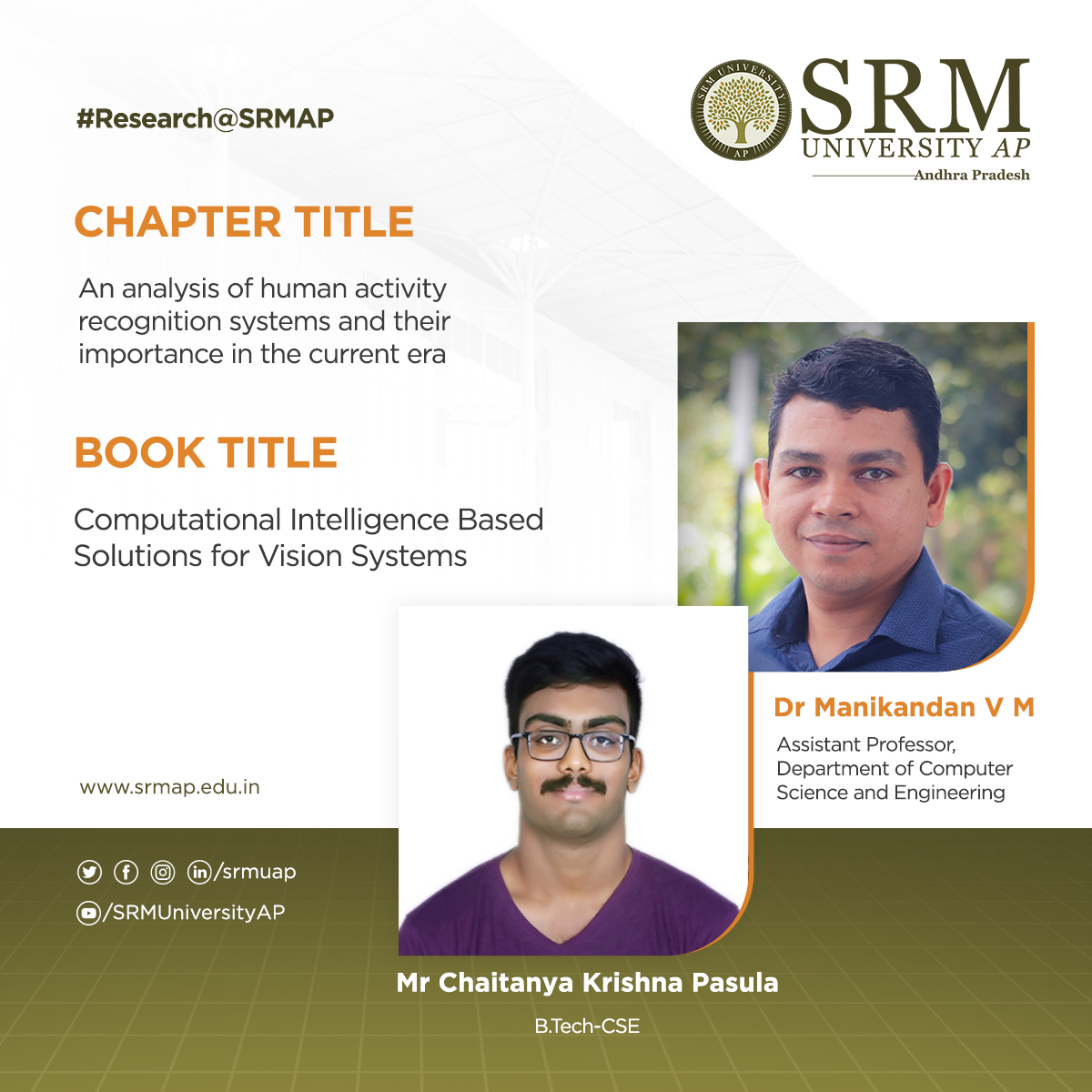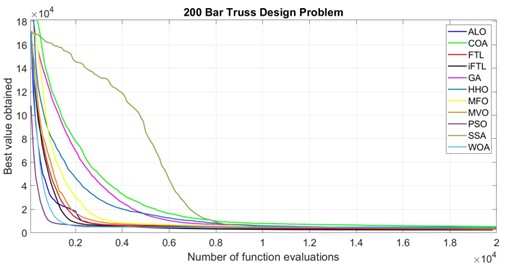Recent News
- The pertinence of human activity recognition systems in the present era June 9, 2022
In recent years, human activity recognition has gained significant attention inside the scientific community. The enhanced spotlight is on the ground of its direct application in multiple domains. The latest research at the Department of Computer Science validates this assumption. Assistant Professor Dr V M Manikandan, and the 4th year B Tech Student Chaitanya Krishna Pasula have published a chapter titled An analysis of human activity recognition systems and their importance in the current era in the book Computational Intelligence Based Solutions for Vision Systems. The book is published by IOP Publishing Ltd.
Explanation of the chapter
 Human activity recognition is one of the most interesting and active research areas in computer vision. More research efforts are being put towards automatically identifying and analysing human activities due to their emerging importance in everyday applications. It serves applications in various areas like security video surveillance, smart homes, healthcare, human-computer interaction, virtual reality, robotics, and digital entertainment. Numerous papers have been published in the domain of human activity recognition. This book chapter discusses the various applications of human activity recognition, different methods available for automatic activity detection from videos, and the advantages of the human activity recognition system. It also describes the challenges in designing and implementing human activity detection schemes. Researchers further explain the publicly available datasets used for training and evaluating the systems for human activity recognition. The efficiency parameters used to evaluate the human activity recognition systems are also briefed in this chapter. The chapter is concluded by comparing the methodologies and speculating the possibilities of future research in this field.
Human activity recognition is one of the most interesting and active research areas in computer vision. More research efforts are being put towards automatically identifying and analysing human activities due to their emerging importance in everyday applications. It serves applications in various areas like security video surveillance, smart homes, healthcare, human-computer interaction, virtual reality, robotics, and digital entertainment. Numerous papers have been published in the domain of human activity recognition. This book chapter discusses the various applications of human activity recognition, different methods available for automatic activity detection from videos, and the advantages of the human activity recognition system. It also describes the challenges in designing and implementing human activity detection schemes. Researchers further explain the publicly available datasets used for training and evaluating the systems for human activity recognition. The efficiency parameters used to evaluate the human activity recognition systems are also briefed in this chapter. The chapter is concluded by comparing the methodologies and speculating the possibilities of future research in this field.In the future, the researchers are planning to design and implement an activity recognition system to identify abnormal activities in public places for safety purposes. This book chapter will be a helpful reference for UG/PG/Ph.D students who aspire to research in the domain of activity detection from video.
Continue reading → - Ameliorated Follow the Leader: Algorithm and Application to Truss Design Problem June 9, 2022
Q1 journal publications of our faculty members always bring honour to SRM University-AP. Dr Priyanka Singh, Assistant Professor from the Department of Computer Science and Engineering has published a paper titled “Ameliorated Follow the Leader: Algorithm and Application to Truss Design Problem” in the journal Structures (Q1 journal) having an impact factor of 2.983.
Abstract
 In the real world, resources, time, and money are always limited, necessitating the need for well-balanced algorithms. According to the “No-free-lunch” theorem, no single algorithm exists that works well in all applications. Hence, an optimisation algorithm with improved performance is always needed. The paper presents an improved follow the leader (iFTL) algorithm that imitates the behavioural movement of a sheep within the flock. The algorithm has been utilised to solve eight complex 10, 37, 52, 72, 120, 200, 224, and 942 bar truss design problems.
In the real world, resources, time, and money are always limited, necessitating the need for well-balanced algorithms. According to the “No-free-lunch” theorem, no single algorithm exists that works well in all applications. Hence, an optimisation algorithm with improved performance is always needed. The paper presents an improved follow the leader (iFTL) algorithm that imitates the behavioural movement of a sheep within the flock. The algorithm has been utilised to solve eight complex 10, 37, 52, 72, 120, 200, 224, and 942 bar truss design problems.Practical implications
The algorithm can be utilised to solve several structural and mechanical design problems such as bride design, antenna design, welded beam design, speed reducer, and many more. The algorithm is well suited for all types of real-life engineering problems where optimisation is required, from travel cost optimisation to optimisation of resources in the organisation under the given constraints and objective function.
Collaborators
1. Rahul Kottath (Computer Vision Engineer, Digital Tower, Bentley Systems India Private Limited, Pune, India)
2. Ghanshyam G. Tejani (Assistant Professor, Department of Mechanical Engineering, School of Technology, GSFC University, Vadodara, Gujarat, India)Future Research Plan
Currently, Dr Priyanka is exploring new engineering applications where optimisation techniques can be used. She is working on optimisation methods that can be utilised to classify microarray data, energy optimisation, and mechanical and structural design problems. In future, she plans to propose her work to the industrial level for the greater good and better solutions.
Continue reading →

